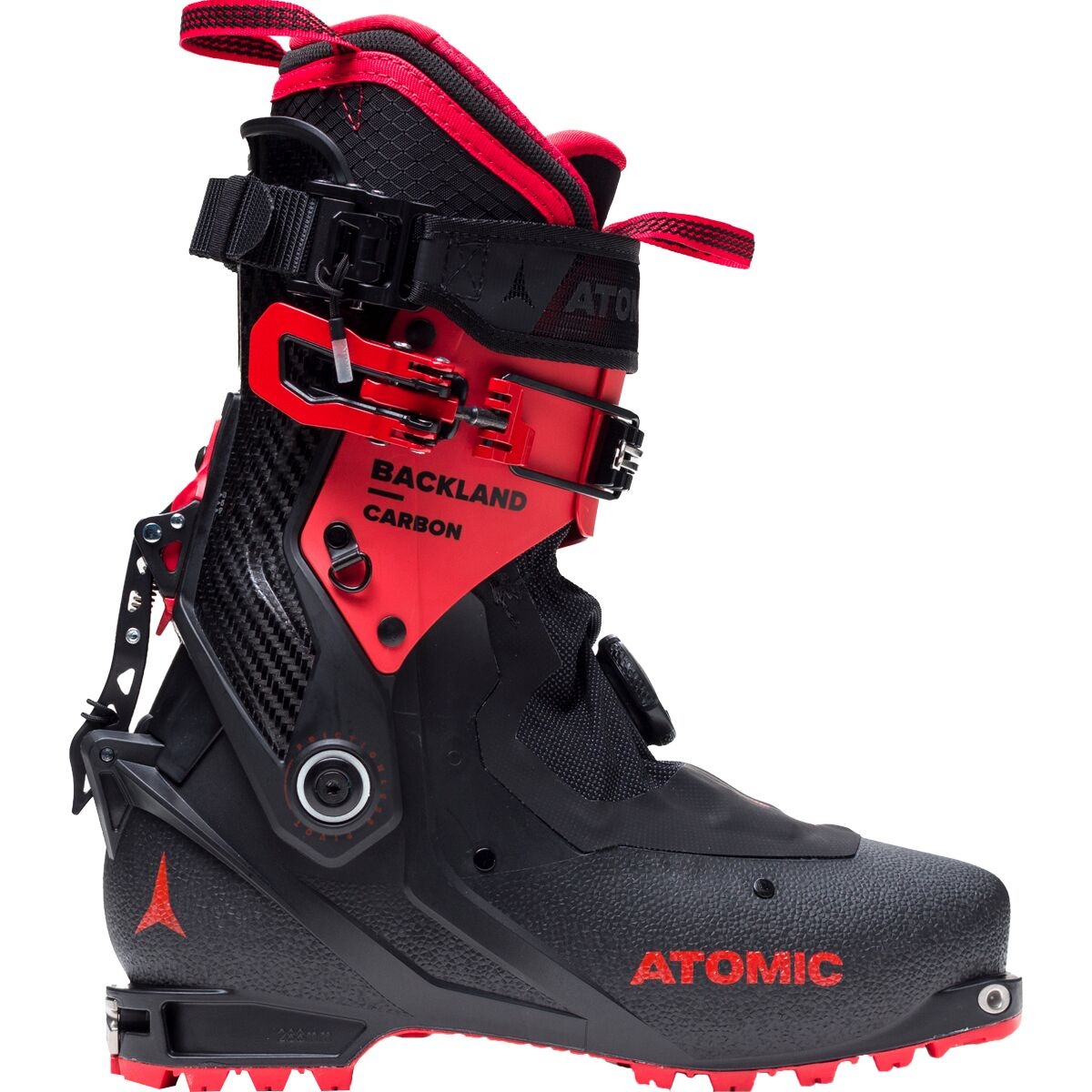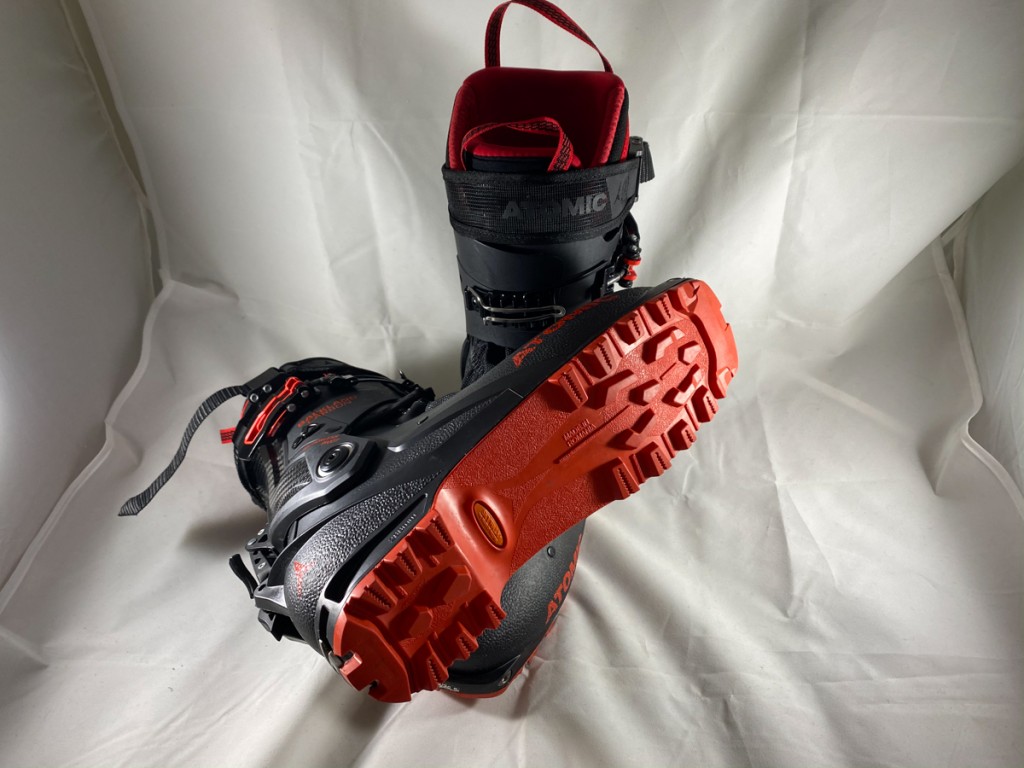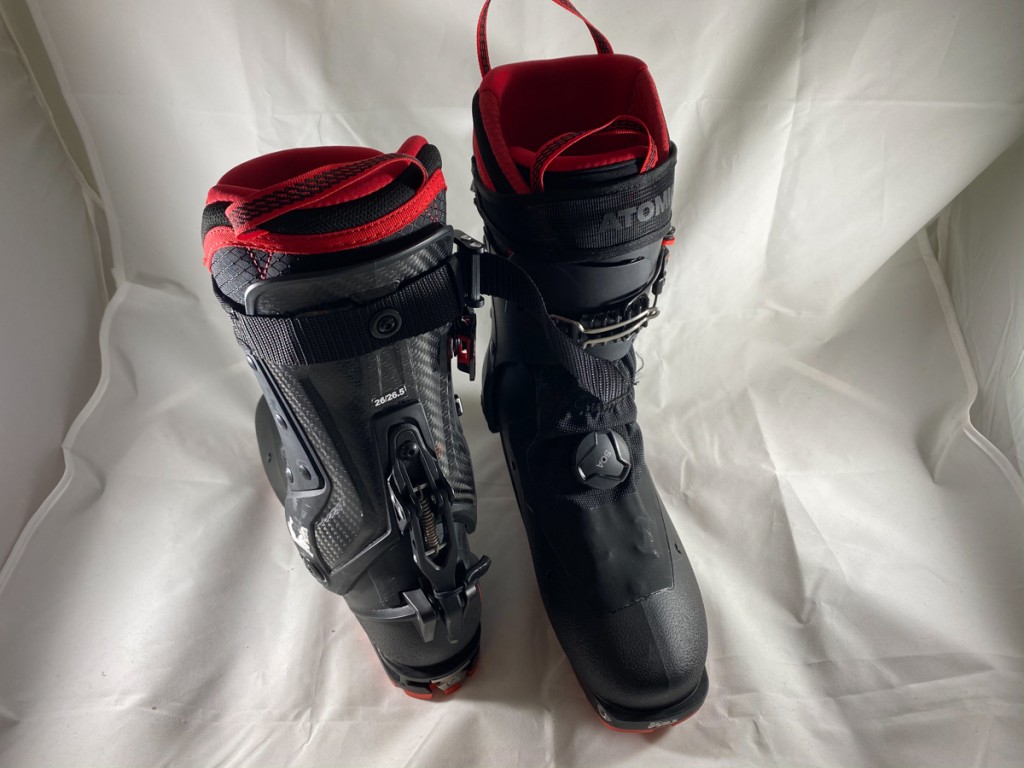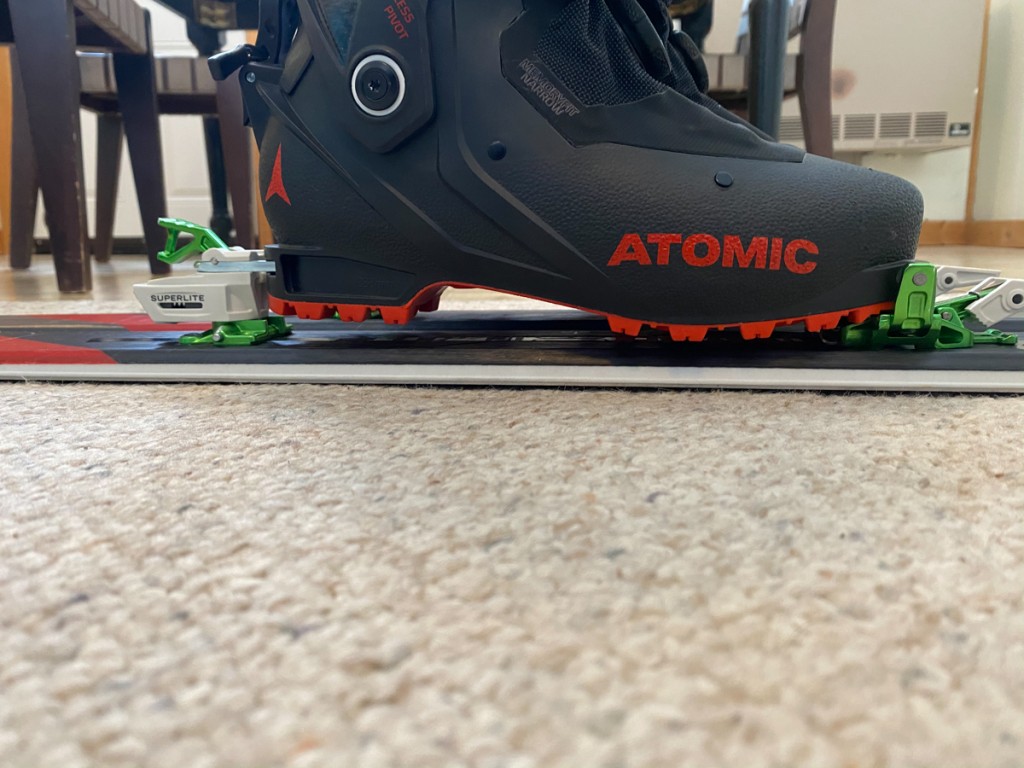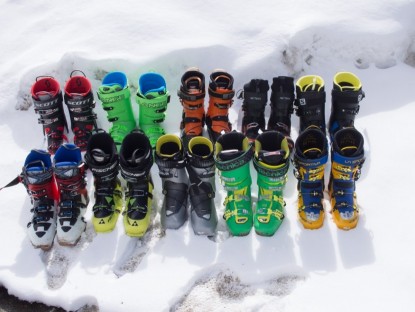Atomic Backland Carbon Review
Our Verdict
Our Analysis and Test Results
Product Update Note — August 2022
Atomic updated the Backland Carbon since our last test cycle. The photos above show the old Backland Carbon (left) and the newest model (right). The core design of this boot is similar to the model we tested, with the new model receiving an updated powerstrap and new graphics for this season. We are now linking to the updated boot, which is more readily available.
The Atomic Backland Carbon is an excellent "speed touring" or fast ski mountaineering boot for those with wide feet and/or those who are on a budget.
Performance Comparison
Uphill Performance
This is what you choose these boots for. They go uphill like a dream. One of our testers said they weren't much different, on the uphill, from skimo race boots. The cuffs have a wide range of motion and, within that range of motion, there is precious little inherent friction. With a further break-in period, the boots loosen up even more than you'll note at first try-on, with little to no impact on the downhill performance. Keep a thin liner (the stock liner has been pretty good for our wider-footed testers) in there to really maximize touring performance.
Whether skinning, booting, climbing, or driving your car, you will appreciate the low profile and easy ankle articulation of the Backland Carbon. For their downhill ski quality, these boots tour amazingly well. Overall, despite the hyperbole of one tester cited above, we found that true race class skimo boots will tour a little better, but not by much. For anything but racing, you will readily justify the minor compromises. These boots tour as well as you would ever want in normal backcountry skiing and ski mountaineering.
Weight
One of the tested, size 26.5 Atomic Backland Carbon weighs 1077 grams. A few backcountry skiing boot models weigh less, but they bring significant compromises in performance or price. We have a hard time imagining lighter boots, with this level of performance, that aren't hundreds of dollars more.
We separate weight from "uphill performance" for our scoring, but really they are closely intertwined. Low weight matters a ton on the uphill. All else equal, you will arrive to your summit fresher with more options and more energy with lighter boots. With the Backland Carbon, the lightweight construction flies uphill but lends enough support for skilled skiers on the downhill.
Downhill Performance
The Backland Carbon is an ultralight boot. You inherently make some compromises for the downhill. You will make tighter turns, at lower speeds with smaller skis than you can with bigger kicks.
Downhill performance is limited by cuff height and stiffness. To save weight and improve uphill performance, this Atomic cuff is up to a couple of inches lower than "free ride" type touring boots. Once adjusted, you might hardly notice this. You will forever, though, notice the stiffness differences. Forward and back, the boots just don't have the support of bigger boots. Laterally the carbon cuff seems to hold up to higher energy but doesn't match the big dogs.
Comfort and Fit
The cushy liner and relatively high volume fit give a very favorable initial impression of the Backland Carbon. In touring mode, these feel like fleecy apres ski slippers more than ski boots. There are drawbacks to this initial comfort (soft liners like this "pack out" faster than stiffer versions), but you will certainly notice the plushness at first.
A thicker, stiffer liner can take up some space for narrower feet, but this negates some of the touring performance attributes and keeps the all-important shell further from your foot in downhill mode. We find, over and over again, that ultralight ski boots need to fit closely for optimum downhill performance. This is true across the board, but especially true in the ultralight class. Whether the liner is stiff or soft, it is the shell that does the "heavy lifting".
Space between you and that shell is a literal gap in energy transmission in downhill mode. Choose these boots as a value, for sure. But realize that if your feet are narrow to average, you might need to soon accessorize with costly aftermarket liners. High volume feet can use the stock liners with greater success and reap better performance.
Warmth
Light boots are limited in insulation value. There is no way around this. They have to fit close to perform well, and the materials are inherently thinner. Your feet will be colder than in beefier boots, all else equal.
The flip side of this bad news is that lighter boots (and accompanying lighter kit throughout) enable quicker movement in the mountains. Higher pace travel is warmer travel. Many, many high-end users are keeping their toes and using ultralight boots like the Backland Carbon. However, this is a high consequence game. Those same high-end users relying on movement for warmth and safety are very vulnerable to the elements when something forces a stop. Break a binding or get benighted, and you will get cold feet very fast in the Backland Carbon and its ultralight cousins.
Ease of Use
Ultralight boots generally employ unique and innovative closure systems. The Backland is no exception, but the innovation is proven and reliable. The forefoot tightens with the BOA system. This is new to Atomic, but proven for years in other applications. It is also ultralight, spreads the holding force out evenly, and is readily adjusted. Concerns about icing and durability of the BOA are natural, but extensive use suggests that there are virtually no actual problems.
The upper cuff closures of the Backland Carbon are pretty standard. A cam-lock power strap, ladder-lock main buckle, and separate, spring loaded, external cuff lock work together to close you into downhill mode. Other boot companies have been able to combine these three elements into one, but that introduces more complications and vulnerability. The Backland Carbon takes longer to transition than some close competitors.
Previous versions employed a removable tongue for touring optimization and downhill stiffness. The Backland series of boots was the last holdout in this annoying trend. Atomic eliminated this attribute as of 2020, and we are thankful to have moved on. No skier liked to change their tongues, so few did. Manufacturers had good intentions, but the execution just wasn't worth it. We're glad to see the removable tongue trend gone.
Value
The Backland Carbon wins our highest value award. Among the lightweight "speed touring" ski mountaineering boots, we can't envision a less expensive way to achieve this level of performance. You can spend less, and get significantly heavier form and/or lower performance. You have to spend a lot more to get marginally better weight savings or performance. These are a good value. Atomic's wide distribution system and economy of scale means that the Backland Carbon is likely to be found on sale too. Previous versions are acceptable, but this latest iteration is the best.
Conclusion
You will choose these as a quiver item. They aren't all-around backcountry ski boots. Rather, they are a specialized product for light and fast applications. When building a niche kit, it is hard to justify spending top dollar. If you are diversifying on a budget, the Backland Carbon is an inexpensive way to get into lighter footwear.


